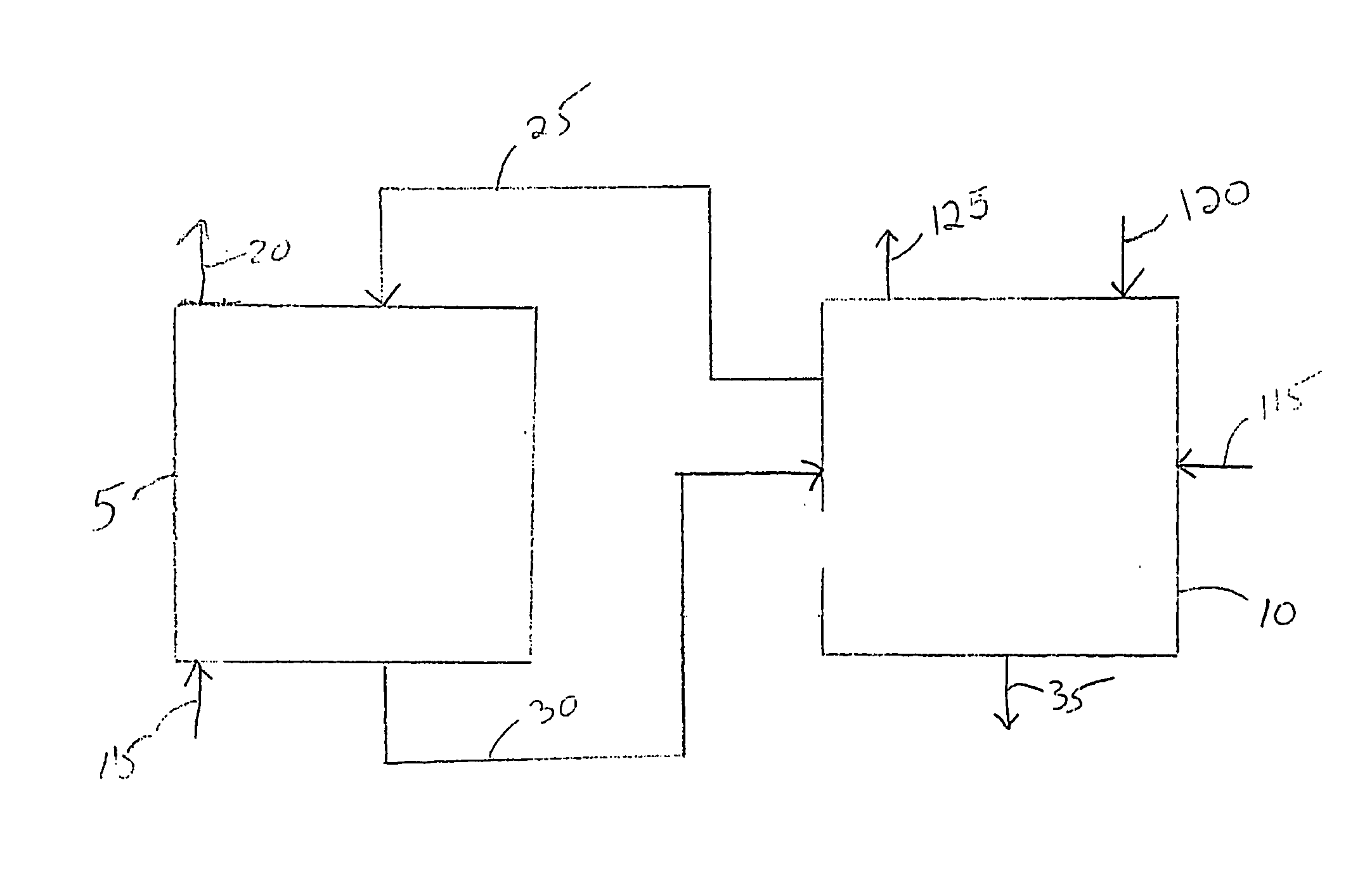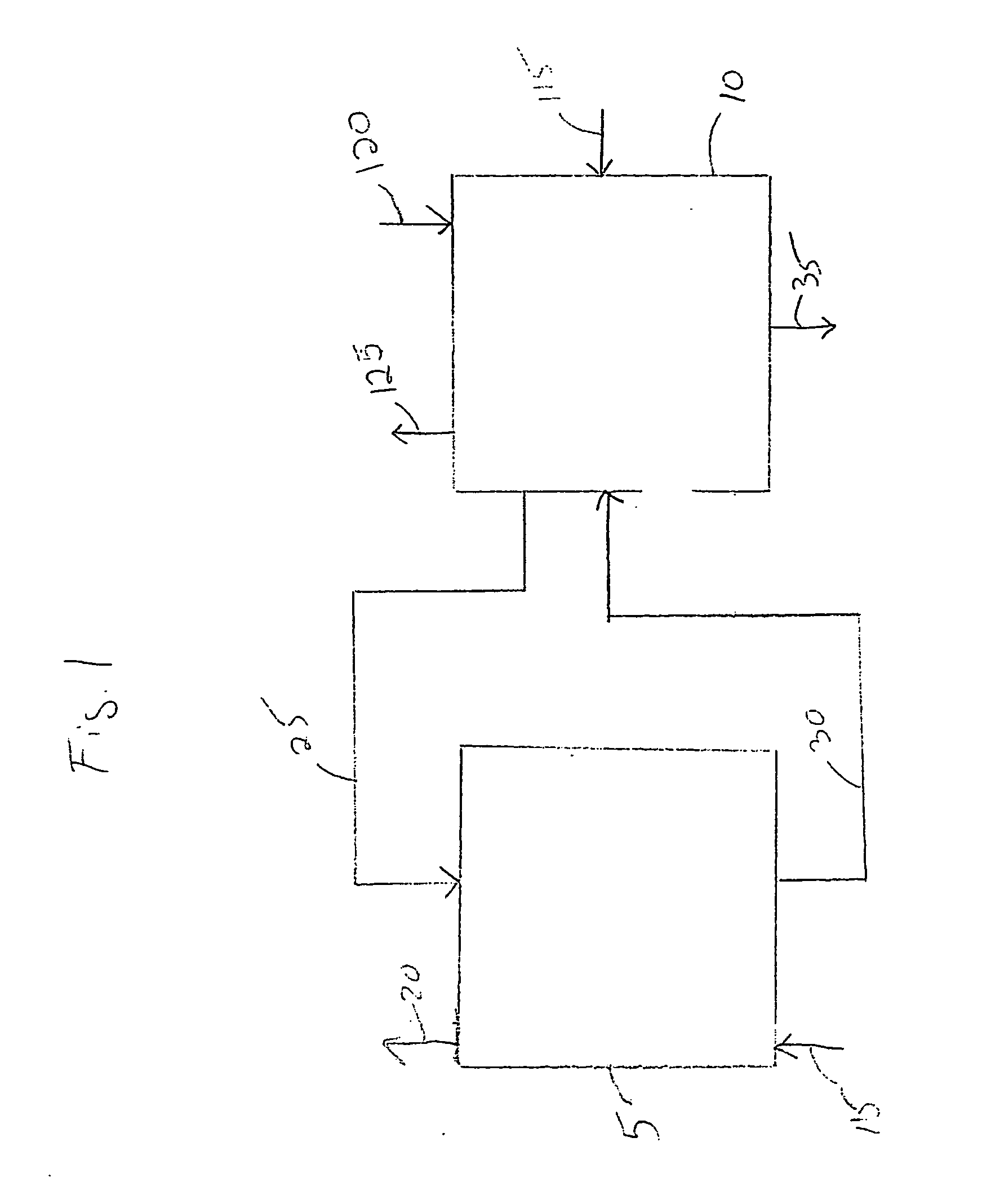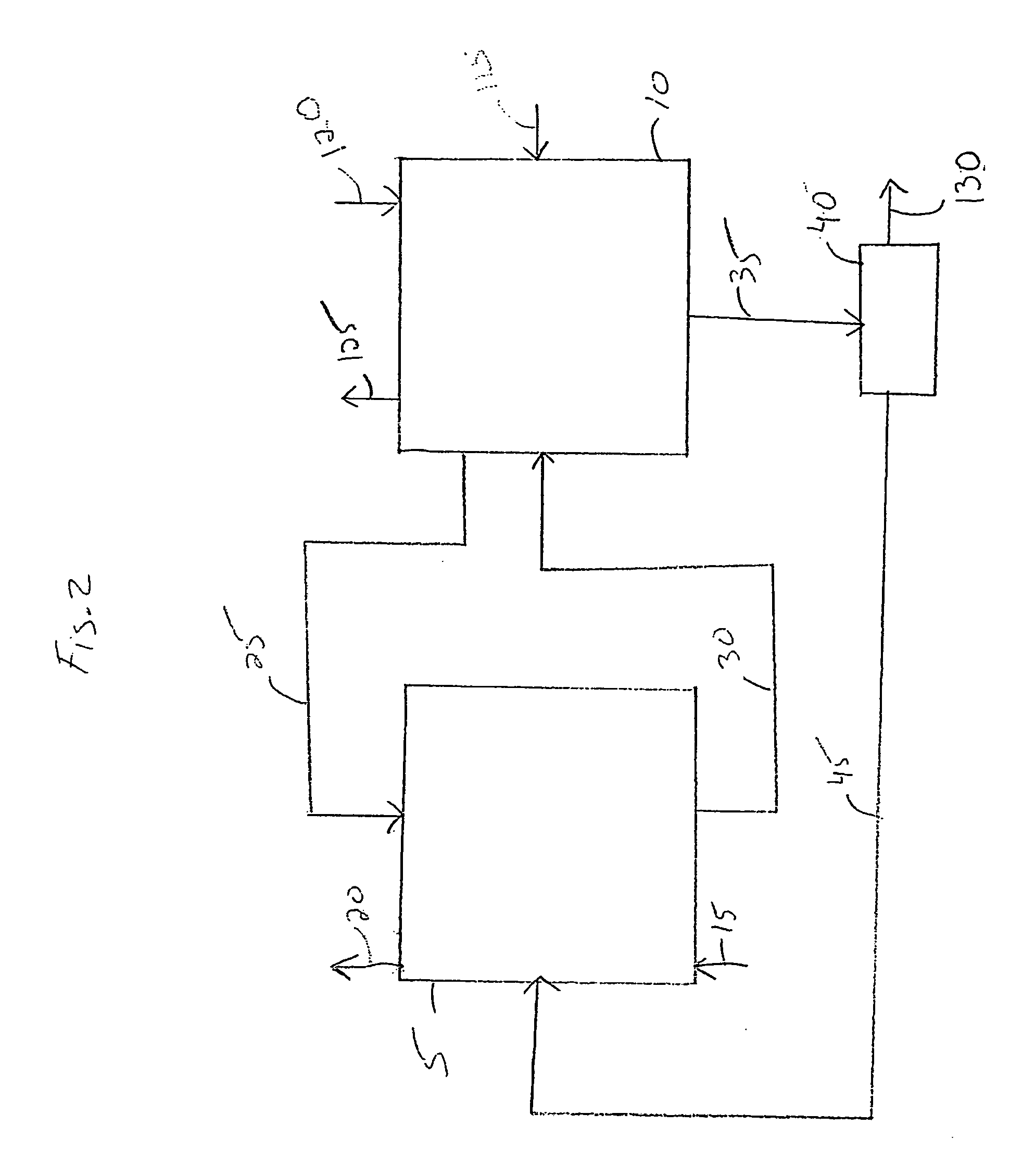Electrochemical process for decomposition of hydrogen sulfide and production of sulfur
a hydrogen sulfide and electrochemical technology, applied in the field of gas conversion, can solve the problems of reducing the economic value of hydrogen gas, the economic cost of the membrane, and the inefficiency of separating between sulfur and hydrogen gas
- Summary
- Abstract
- Description
- Claims
- Application Information
AI Technical Summary
Problems solved by technology
Method used
Image
Examples
example 1
[0052]FIG. 10 represents the process diagram with electrode assembly 200 for Example 1. A gas diffusion cloth 205 was glued on a graphite plate 210 with an electrically conductive adhesive. The gas diffusion cloth was commercially available as A-7 ELAT / DS / INC / V2.1 from E-Tek, and the adhesive was a mixture of electronically conductive carbon black and LOCTITE epoxy. LOCTITE is an epoxy that is commercially available from Loctite Corp. Electrode assembly 200 was immersed in a 1 M Na2S solution 215. The area for air diffusion was about 4.5 cm2, and the dimension of graphite plate 210 was 2×4.3×0.6 cm. The gas diffusion cloth 205 was polymer cloth coated with carbon black and platinum (about 0.5 mg Pt / cm2). The air pressure in the air chamber 220 was controlled at about 1.25″ of water so that air would not form bubbles on the liquid side 225. The Na2S solution 215 and electrode assembly 200 were contained in a vessel 230 that was immersed in a water bath 235. The water bath temperature...
example 2
[0056] The experimental set-up and conditions were similar to that of EXAMPLE 1 except solution temperature. Two tests (3 and 4) were run using a non-catalytic air-diffusion electrode, instead of the catalytic gas diffusion carbon cloth. A non-catalytic air-diffusion carbon cloth was commercially available as A-7 ELAT / DS / INC / V2 from E-Tek. In addition, the area for air diffusion was 2.4 cm2, and the dimension of the graphite plate 210 was 2.9×4.5×0.8 cm. In addition, the reference electrode 240 was not used. Test 3 was run at 25° C., and test 4 was run at 50° C. The following Table II shows the results of tests 3 and 4.
TABLE IISulfur SolutionTest No.Obtained (g)OH− Concentration (M)Temperature30.150.0592540.500.19450
[0057] The results show that the oxidation of sulfide ions to polysulfide ions and the reduction of oxygen to hydroxide ions occurred at the air-diffusion electrode without a platinum catalyst. In addition, the data shows that the conversion rate of sulfide ions increa...
example 3
[0058] 5 grams of lithium sulfide was dissolved in 100 ml of water at room temperature. The lithium sulfide was formed by bubbling hydrogen sulfide gas through lithium hydroxide. 10 grams of manganese dioxide was then added to the lithium sulfide solution. As a result, sulfide ions in the solution were oxidized to form polysulfide ions, and the solution became more caustic. The reaction can be expressed as follows:
(1+x)S2−+2xMnO2+xH2→S2−1+x+2xMnO+2xOH−
The manganese dioxide was reduced to manganese oxide and remained as a solid in the alkaline solution.
[0059] After the reaction, the liquid and solid particles were separated by filtration, which resulted in a brownish solution that indicated the presence of polysulfide ions. Sufficient hydrochloric acid was added to the polysulfide solution. Immediately, sulfur solid precipitated out from the solution. The resulting solid sulfur was collected by filtration and dried at 40° C. under vacuum for 3 hours. A total of 2.08 g of dry eleme...
PUM
| Property | Measurement | Unit |
|---|---|---|
| cell voltage | aaaaa | aaaaa |
| voltage | aaaaa | aaaaa |
| voltage | aaaaa | aaaaa |
Abstract
Description
Claims
Application Information
 Login to View More
Login to View More - R&D
- Intellectual Property
- Life Sciences
- Materials
- Tech Scout
- Unparalleled Data Quality
- Higher Quality Content
- 60% Fewer Hallucinations
Browse by: Latest US Patents, China's latest patents, Technical Efficacy Thesaurus, Application Domain, Technology Topic, Popular Technical Reports.
© 2025 PatSnap. All rights reserved.Legal|Privacy policy|Modern Slavery Act Transparency Statement|Sitemap|About US| Contact US: help@patsnap.com



